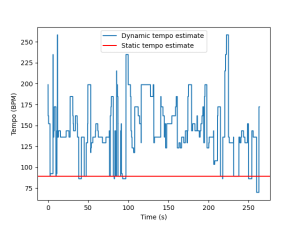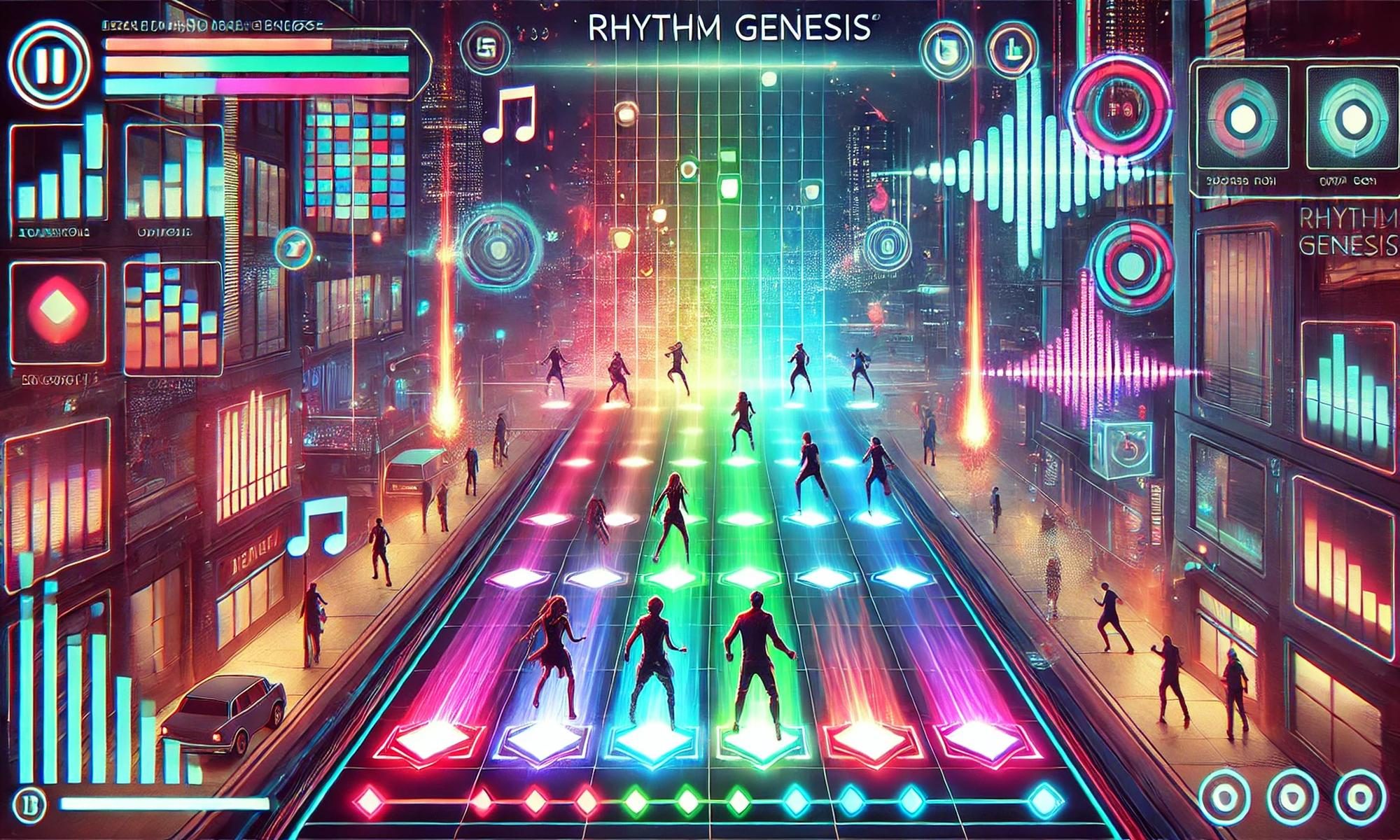I started out this week with exploring how to leverage Librosa to analyze the beat of songs that have time-varying tempo. These are the results of processing, using a standard deviation of 4 BPM, an iPhone recording of high school students at chamber music camp performing Dvorak Piano Quintet No. 2, Movement III:



When running the a test that simultaneously plays the piece and a click on each estimated beat, the beats sound mostly accurate but not perfect. I then moved on to adding note onset detection in order to determine the rhythm of the piece. My current algorithm selects timestamps where the onset strength is above the 85th percentile. It then removes any timestamps that are within a 32nd note of each other, which is calculated based on the overall tempo. This works very well for monophonic songs that can have some variation in tempo. For multi-instrumental tracks, it tends to detect the rhythm of the drums if present, since these have the most clear onsets, and some of the rhythm of the other instruments or voices.
I also worked on setting up my development environment for the new game engine Yuhe built. Next week I plan to continue integrating the audio analysis with the game. I also plan to adjust the rhythm algorithm to dynamically calculate the 32nd note threshold based on the dynamic tempo, as well as experiment with different values for the standard deviation when calculating the time-varying tempo. I also would like to look into possible ways that we can improve rhythm detection in multi-instrumental songs.
